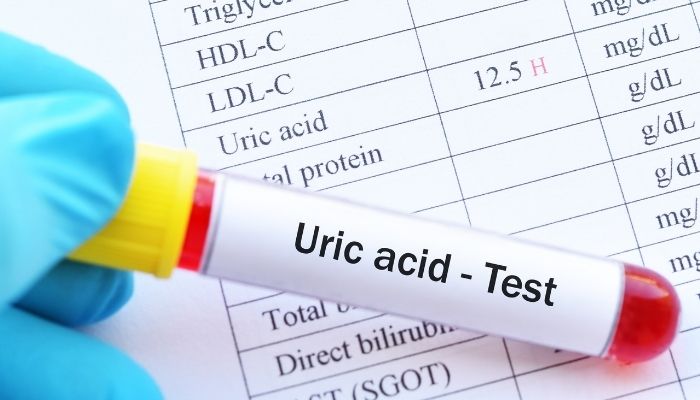Uric acid is a surplus product from the absorption of food. Your kidneys usually filter it and this product is thrown out of your body through urine. If your body is unable to excrete uric acid, this can start forming solid crystals in the joints and lead to a condition called gout. If your body produces excessive uric acid or can’t excrete it properly, the uric acid level in your blood will also get elevated. Patients who have chronic gout need to take medications, but a low-fat diet chart for uric acid is also effective in minimizing the condition and symptoms.
Here we are going to discuss a diet chart for uric acid patients so that they can overcome this condition.
Before that, let’s take a look at some of the reasons that are responsible for high uric acid.
- Genetics
- Immunosuppressant drugs
- Excessive consumption of purine enriched diets such as liver, mushrooms, peas, dried beans, and sardines
- Tumor lysis syndrome (in this condition, cells are released quickly into the blood due to cancer or by chemotherapy)
- Drinking too much alcohol
- Consuming diuretic medications or water pills
- Obesity
- Psoriasis
- Hypothyroidism
- You should restrict your fat intake as it may reduce the excretion of uric acid
- You must consume adequate fluid as it will help in keeping the urine diluted
- You should constrain your alcohol consumption
Foods to Avoid for Uric Acid
- Discard food items like red meat, shellfish, mincemeat, meat extracts, and organ meats
- You must stay away from certain types of fish such as sardine, mackerel, and roe
- You should also avoid whole pulses. Never eat food items like Masur, rajma, chana, and chole
- While consuming vegetables, and fruits, avoid green peas, spinach, cauliflower, French beans, brinjal, mushroom, custard apple, and mud apple (chikoo)
Follow These Diet Rules
Don’t consume excess salt along with food. Prepare food items with less salt. Many people add salt while cooking rice or preparing the dough. Just discard this practice.Use of aides such as tomato, lime juice, curd, vinegar, kokum, amchur, and pepper powder should be discarded
If you consume salt with your meals, then keep your salt shaker in a different place. This will control your salt intake
Never consume salted nuts, chutneys, pickles, salted biscuits, and papads
Restrict excess consumption of processed and preserved foods. Avoid food items like bakery products, chips, and fried foods
Take a Look at Uric Acid Diet Chart
- Foods that contain high bromelain like pineapple
- Low-fat dairy products
- Complex carbohydrates like bread, and cereals
- Foods that are high in Vitamin C such as oranges, potatoes, red bell peppers, and red cabbage
- Fresh cherries like strawberries, blueberries, and red-blue berries
- Celery
- Bananas
- Vegetables like cabbage and parsley
Take Look at the Uric Acid Control Diet Chart
1. Breakfast
You can start your day with rice idlis (4) and sambhar/corn flakes with toned milk/rice dosa (3) with sambar/bajra, upma with vegetables/ Uttapam (3) with sambar/paratha (2) with green chatni/whole bread sandwich2. Mid Meal
You can take pear/guava/orange/banana/musk melon (100 grams)/pineapple (100 grams3. Lunch
An ideal lunch would be brown rice with jowar roti, sabzi, rasam/mooli sabzi/aloo brinjal sabzi/gourd sabzi/capsicum sabzi/ivy gourd sabzi4. Evening Snack
Green tea (1 cup) with biscuits (3)5. Dinner
You must consume food items like jawar roti with bhindi curry/bajra roti with cauliflower curry or ridge gourd curry or raw banana curry or tinda curryDo's and Don’Ts While Following Your Diet Chart for Uric Acid
Don'ts:
- Avoid soft drinks, sweetened cereals, cookies and cakes, donuts and pastries, chips, and confectionery items
- Eat your meals on time. If you skip meals these will allure you to eat snacks and don’t snack between meals
- Eat slowly and chew every bite. Try to use chopsticks
- When you are hungry never eat food from local shops
- Never eat more than two or three pieces of fruit per day
Do's:
- Consume more vegetables and incorporate them into every meal
- Drink adequate water so that you never feel hungry when thirsty
- Try eating smaller portions
- Do moderate exercise every day for 30 minutes to one hour each. Perform activities like brisk walking, team sport, cycling, or swimming.
- Be careful what you are eating and purchasing



